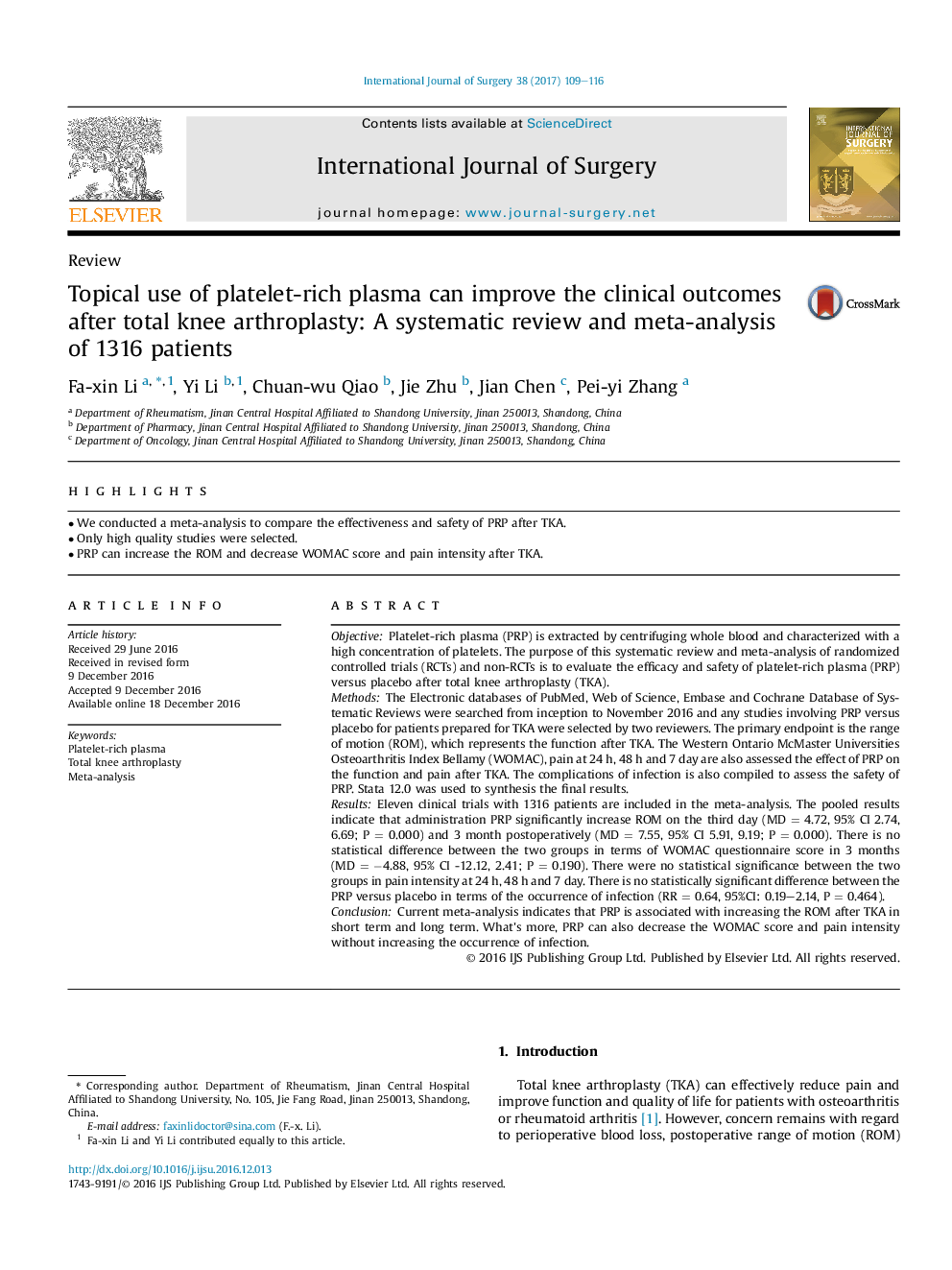| کد مقاله | کد نشریه | سال انتشار | مقاله انگلیسی | نسخه تمام متن |
|---|---|---|---|---|
| 5731846 | 1611941 | 2017 | 8 صفحه PDF | دانلود رایگان |
- We conducted a meta-analysis to compare the effectiveness and safety of PRP after TKA.
- Only high quality studies were selected.
- PRP can increase the ROM and decrease WOMAC score and pain intensity after TKA.
ObjectivePlatelet-rich plasma (PRP) is extracted by centrifuging whole blood and characterized with a high concentration of platelets. The purpose of this systematic review and meta-analysis of randomized controlled trials (RCTs) and non-RCTs is to evaluate the efficacy and safety of platelet-rich plasma (PRP) versus placebo after total knee arthroplasty (TKA).MethodsThe Electronic databases of PubMed, Web of Science, Embase and Cochrane Database of Systematic Reviews were searched from inception to November 2016 and any studies involving PRP versus placebo for patients prepared for TKA were selected by two reviewers. The primary endpoint is the range of motion (ROM), which represents the function after TKA. The Western Ontario McMaster Universities Osteoarthritis Index Bellamy (WOMAC), pain at 24Â h, 48Â h and 7 day are also assessed the effect of PRP on the function and pain after TKA. The complications of infection is also compiled to assess the safety of PRP. Stata 12.0 was used to synthesis the final results.ResultsEleven clinical trials with 1316 patients are included in the meta-analysis. The pooled results indicate that administration PRP significantly increase ROM on the third day (MDÂ =Â 4.72, 95% CI 2.74, 6.69; PÂ =Â 0.000) and 3 month postoperatively (MDÂ =Â 7.55, 95% CI 5.91, 9.19; PÂ =Â 0.000). There is no statistical difference between the two groups in terms of WOMAC questionnaire score in 3 months (MDÂ =Â â4.88, 95% CI -12.12, 2.41; PÂ =Â 0.190). There were no statistical significance between the two groups in pain intensity at 24Â h, 48Â h and 7 day. There is no statistically significant difference between the PRP versus placebo in terms of the occurrence of infection (RRÂ =Â 0.64, 95%CI: 0.19-2.14, PÂ =Â 0.464).ConclusionCurrent meta-analysis indicates that PRP is associated with increasing the ROM after TKA in short term and long term. What's more, PRP can also decrease the WOMAC score and pain intensity without increasing the occurrence of infection.
Journal: International Journal of Surgery - Volume 38, February 2017, Pages 109-116
